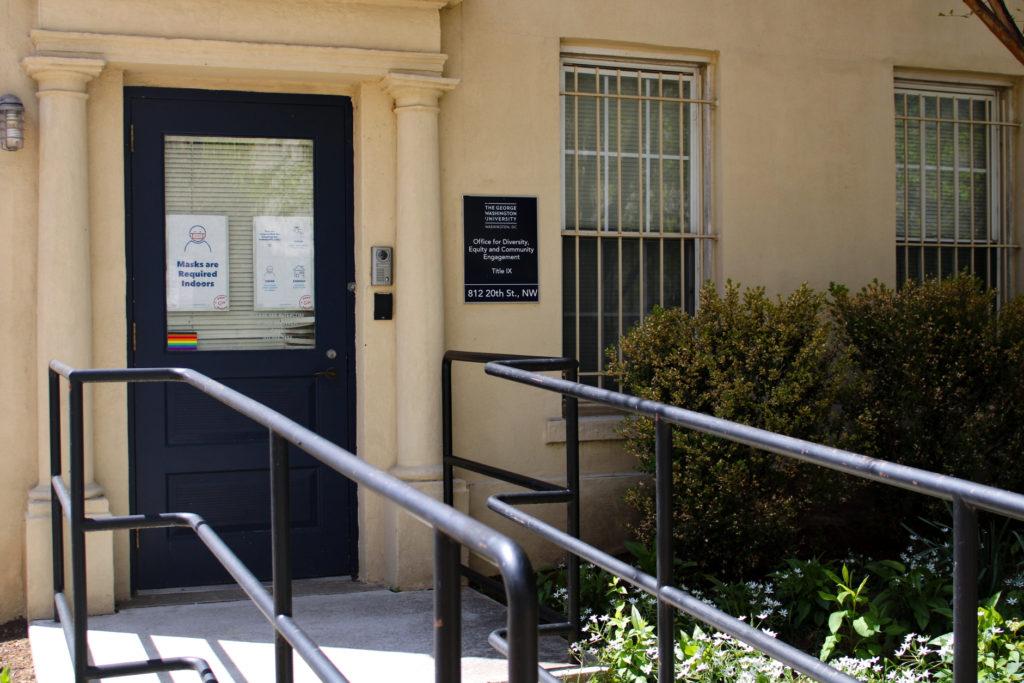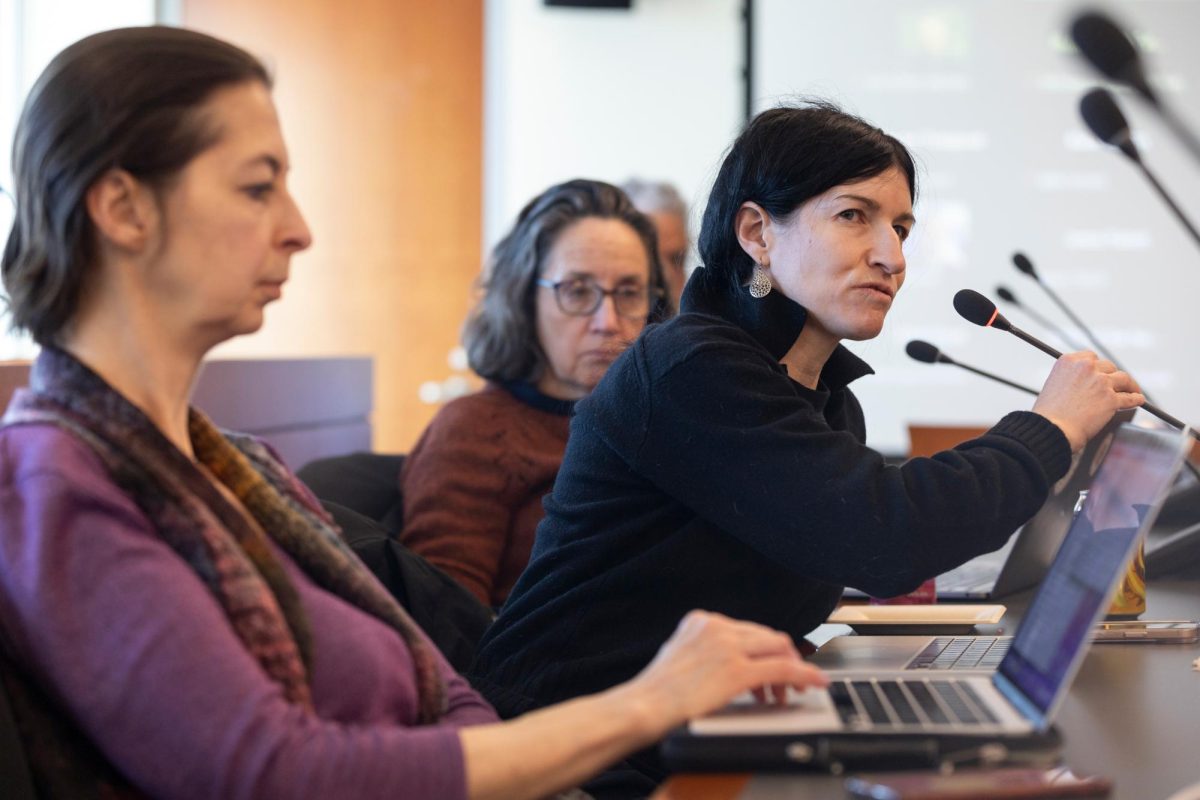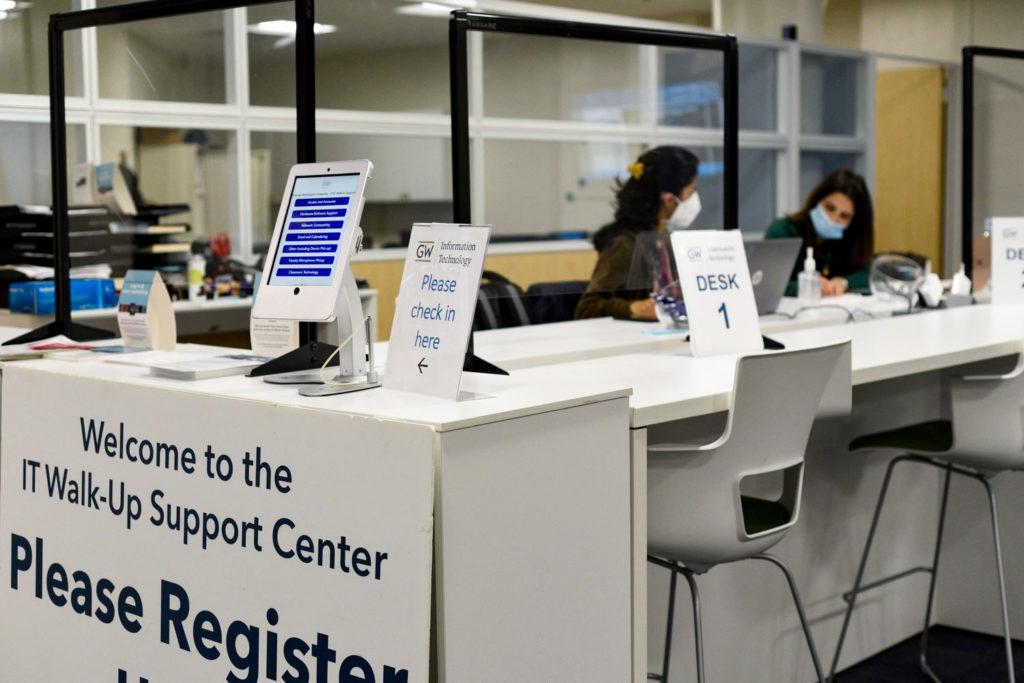Officials are looking to hire more full-time female and underrepresented minority professors, or URM faculty, after faculty diversity dipped during the pandemic.
The number of full-time female faculty fell about six percent from 646 to 604 faculty members, and full-time URM faculty dropped by about 10 percent from 139 to 126 faculty members between 2019 and 2021, according to the Annual Core Indicators Report. Provost Chris Bracey said at a Faculty Senate meeting earlier this month that the Board of Trustees started 44 new tenure and tenure track searches this academic year that prioritize female and minority candidates in an effort to increase faculty diversity.
“We really need to focus on URM faculty hiring, as there appears to have been a significant drop off during the pandemic,” Bracey said.
The University defines underrepresented minority faculty as African American/Black, American Indian and Hispanic faculty of all genders. The Columbian College of Arts and Sciences launched an initiative last summer to hire 12 faculty members that are racially reflective of the student population.
Faculty said many female professors left their positions when the pandemic put stress on their familial roles, while underrepresented minority faculty may have opted to move to universities working to strengthen diversity in the wake of heightened calls for racial equity reforms in 2020.
From 2019 to 2021, full-time male faculty decreased from 719 to 697 professors, full-time white faculty fell from 984 to 928 and full-time Asian faculty increased from 217 to 222, according to the report.
Bracey said URM faculty experienced no major population changes, while Black faculty experienced a “non-trivial” decrease in population throughout the pandemic at a Faculty Senate meeting earlier this month.
Officials created a group of 26 students, faculty and administrators in February to review University-wide diversity. The team launched a diversity, equity and inclusion climate survey last week to gather feedback from students, faculty and staff on the University’s current environment and will use the results to inform a report on GW’s diversity.
University spokesperson Timothy Pierce said the team’s review of faculty diversity is not “static,” and GW holds unconscious bias training for recruiters to prevent discrimination in hiring practices to attain a diverse faculty.
“The University remains committed to attracting and retaining the most qualified and diverse faculty to advance the teaching and research missions of the university,” Pierce said in an email.
Candice Chen, an associate professor of health policy and management and a member of the Diversity Program Review Team, said her department initiated faculty searches before the pandemic to potentially recruit more female and URM faculty, but the searches were paused when the pandemic began. She said the University is “failing” to achieve school-wide faculty diversity because of low numbers of female faculty and faculty of color.
“We see less faculty of color and people in leadership positions of color, and this has been a historical issue,” Chen said. “It’s based on structural racism and policies inside of our institutions that need to be changed.”
Chen said diversity improvements at health profession schools like GW have been “small” because racial discrimination from research agencies limit the possibility for promotions and tenure for female and URM faculty. She said the National Institutes of Health does not often fund research that Black and Asian female faculty pursue about equity issues like socioeconomic disparities in healthcare because the NIH is more focused on disease treatment than structural racism.
Chen said the murder of George Floyd turned attention toward racial equity within universities and pushed URM faculty to leave for schools that are committed to ending institutionalized racism.
Black faculty members said in 2020 that higher education and research was “rife with discrimination.”
Chen said daycare closures and children at high risk of COVID-19 infection forced female faculty members to leave their jobs because they had to prioritize tending to their children over research.
“I hope those faculty members are making decisions that are good for themselves,” Chen said. “And then it becomes the rest of our responsibility to change our institutions, so that other people don’t have to experience it and they can be successful.”
Adrienne Davis, a professor of organizational behavior and leadership and the former vice provost for faculty diversity and advancement at Washington University in St. Louis, said faculty have been moving to new institutions because of the “racial pandemic,” in which faculty of color are seeking universities committed to becoming diverse rather than claiming commitment.
Davis said universities struggle to retain minority faculty because they are “overburdened” with requests from faculty and students to represent diverse voices on dissertation committees and help students write about racial issues. She said faculty will burn out and struggle to earn tenure because their other commitment requests give them less time to dedicate to teaching or research.
“That’s a lot of emotional labor because a lot of our students are struggling themselves or are in pain and then faculty of color can kind of absorb that pain and then it becomes really hard to carve out the emotional space to do your own work and focus on yourself,” Davis said.
She said the murder of George Floyd pushed universities to follow through on goals to increase faculty diversity. But some universities are still seeing decreases in Black faculty because institutions across higher education are trying to recruit more Black professors to diversify their own faculty.
Davis said interim University President Mark Wrighton, the former chancellor of Washington University of St. Louis, helped increase Black faculty at Washington University because of his commitment to engage with faculty to encourage diverse recruitment.
“You can have all the programs in the world, but they won’t work if your underlying culture, your underlying organization isn’t structured for change and to achieve diverse outcomes,” Davis said.











